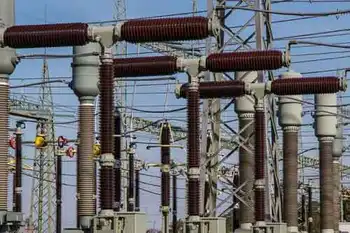Ontario rates jump up to 15 per cent
TORONTO, ONTARIO - An unusually hot summer last year that required expensive power imports means electricity consumers across the province will be paying up to 15 per cent more on their bills starting next month, the Ontario Energy Board announced.
For some customers the increased price of electricity will be partially offset by a decrease in distribution rates, which vary from utility to utility.
A typical Toronto Hydro customer, for example, would see their distribution charges fall by $32 over a full year, but would see the price of electricity increase by $105, averaging out to a 5 per cent to 6 per cent overall increase.
The new rates also apply to businesses that use less than 250,000 kilowatt hours a year.
Customers who have signed contract with retail electricity providers are not affected by the electricity rate increase.
Beginning May 1, residential electricity rates will increase 16 per cent to 5.8 cents from 5 cents per kilowatt-hour for the first 600 kilowatt-hours used between May and October.
Beyond the 600-kilowatt hour threshold, the rate jumps to 6.7 cents from 5.8 cents.
The summertime threshold fell to 600 kilowatt-hours from the current 750 kilowatt-hours. In the winter - between November and April - the threshold remains the same at 1,000 kilowatt-hours.
"About half the increase in the (regulated price plan) pricing results from the variance between the forecast price paid by customers and the actual cost of supplying electricity over the last year," the energy board said.
"The summer of 2005 was the hottest summer experienced in Ontario in the past 30 years, which led to increased electricity demand. Lower water levels also reduced electricity output from hydroelectric plants and forced Ontario to buy electricity from more expensive sources of power."
The regulator also said higher than expected natural gas prices contributed to the higher costs last year.
In January, the energy board said the typical Ontario household paid about $60 less for electricity than the cost of supplying it, amounting to a $384 million gap. Half of todayÂ’s price increase is meant to cover that shortfall, the regulator said, adding that the other half is meant to cover the price increase forecasted for the supply of electricity over the next year.
"The new forecast indicates those costs are expected to increase primarily because of an increase in the price of natural gas relative to last yearÂ’s forecast," the board said.
Distribution rates, which include the cost of building and maintaining power lines and system operation, will fall for about 34 per cent of residential customers, though the majority will see "moderate increases" as high as 5 per cent, it said.
"For most consumers, the total impact of the RPP prices and distribution rates will be in the range of 3 per cent to 15 per cent on their total bill."
Related News

Britain Goes Full Week Without Coal Power
LONDON - For the first time in a century, Britain weaned itself off of coal consumption for an entire week.
Reuters reported that Britain went seven days without relying on any power generated by coal-powered stations.
The accomplishment is symbolic of a shift to more clean energy sources; Britain was home to the first coal-powered plant back in the 1880s.
Today, Britain has some aggressive plans in place to completely eliminate its coal power generation permanently by 2025. In addition, Britain aims to cut its total greenhouse gas emissions by 80 percent from 1990 levels within the next 30 years.
Natural gas was the…




